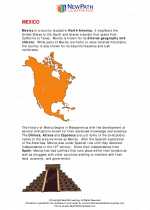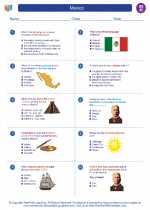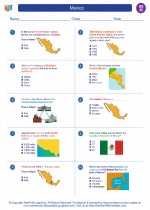The Rocky Mountains
The Rocky Mountains, often referred to as the Rockies, are a major mountain range in western North America. They stretch more than 3,000 miles from northern British Columbia in Canada to New Mexico in the United States.
Formation of the Rockies
The Rockies were formed through a series of geological events over millions of years. The mountain range began to form during the Laramide orogeny, a period of mountain-building activity that occurred between 80 and 55 million years ago. The collision of the North American Plate and the Pacific Plate caused the Earth's crust to buckle and uplift, creating the Rocky Mountains.
Geography and Features
The Rockies are known for their rugged terrain, diverse ecosystems, and numerous peaks exceeding 14,000 feet in elevation, known as "fourteeners." Notable national parks located within the Rockies include Yellowstone, Rocky Mountain, Grand Teton, and Glacier. The range also serves as a crucial watershed, with numerous rivers and streams originating from its snow-capped peaks.
Wildlife and Biodiversity
The Rockies are home to a wide variety of flora and fauna, including iconic species such as grizzly bears, mountain lions, bighorn sheep, and elk. The diverse ecosystems within the Rockies support a rich array of plant life, from alpine meadows to dense coniferous forests.
Human Impact
Native American tribes, including the Shoshone, Blackfeet, and Ute, have long inhabited the region, utilizing its resources for sustenance and cultural practices. European exploration and settlement in the 18th and 19th centuries led to the exploitation of natural resources such as minerals, timber, and water, impacting the landscape and indigenous communities.
Study Guide
- What geological events led to the formation of the Rocky Mountains?
- Identify and describe two national parks located within the Rockies.
- Discuss the significance of the Rockies as a watershed.
- Name two iconic animal species found in the Rockies and describe their habitats.
- How have human activities impacted the Rockies and its indigenous inhabitants?
Studying the Rocky Mountains provides insights into geological processes, biodiversity, human-environment interactions, and the cultural significance of landscapes. Understanding these aspects contributes to a broader appreciation of North America's natural and historical heritage.
[Rocky Mountains] Related Worksheets and Study Guides:
.◂Social Studies Worksheets and Study Guides Eighth Grade. Mexico

 Worksheet/Answer key
Worksheet/Answer key
 Worksheet/Answer key
Worksheet/Answer key
 Worksheet/Answer key
Worksheet/Answer key
 Worksheet/Answer key
Worksheet/Answer key
